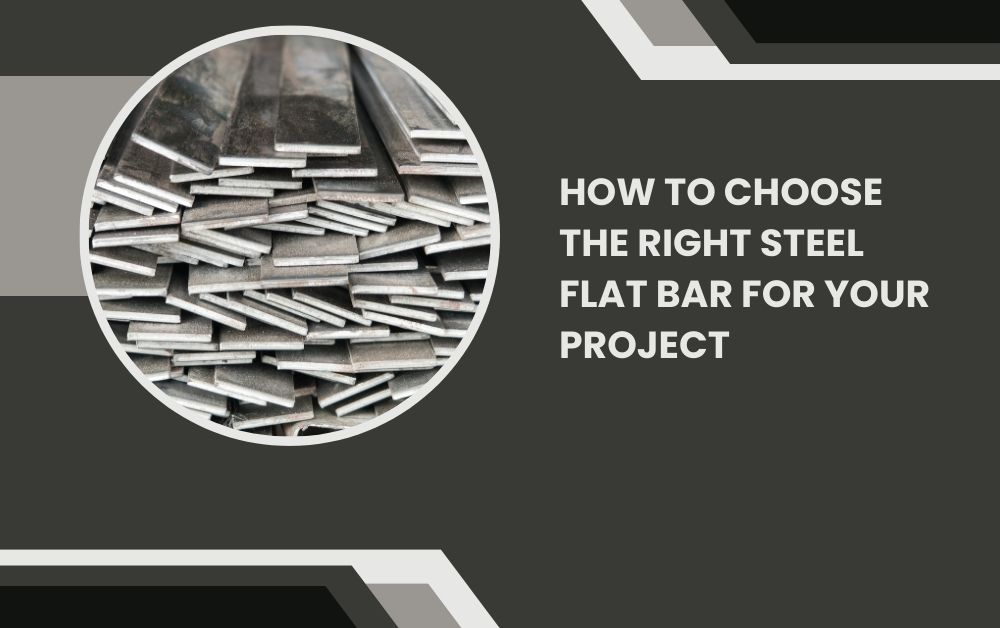When starting a new project, choosing the right materials is crucial for success. One important material often used in various projects is the steel flat bar. This guide will help you understand what a steel flat bar is, why it is essential, and how to choose the right one for your needs.
Understanding Steel Flat Bars
What is a Steel Flat Bar?
A steel flat bar is a long, rectangular piece of steel. It is a versatile material used in many different types of projects. You can find steel flat bars in construction, manufacturing, repairs, and even in DIY projects. They come in various sizes and thicknesses, making them suitable for a wide range of applications.

Why Use Steel Flat Bars?
Steel flat bars are popular because they are strong, durable, and flexible. They can support heavy loads, resist wear and tear, and withstand harsh weather conditions. Steel flat bars are also easy to cut, weld, and shape, making them a favorite among builders and manufacturers.
Common Uses of Steel Flat Bars
Steel flat bars are used in many industries and projects, including:
- Construction: Steel flat bars are used for framing, reinforcing structures, and creating support beams.
- Manufacturing: They are used to make machinery parts, tools, and equipment.
- Repairs: Steel flat bars are handy for fixing or reinforcing existing structures.
- DIY Projects: Many people use steel flat bars for home improvements and craft projects.
Note:- Ready to start your next project with the best materials? Explore our wide selection of high-quality Steel Flat Bars to find the perfect fit for your needs. Whether you’re building, manufacturing, or DIY-ing, our steel flat bars offer the strength and durability you need. Visit our store or contact us today to get expert advice and unbeatable prices on all your steel flat bar needs. Don’t wait—upgrade your project with the best materials now!
Factors to Consider When Choosing a Steel Flat Bar
Project Requirements
Before selecting a steel flat bar, you need to understand the requirements of your project. Consider the following factors:
- Load Bearing: Determine how much weight the steel flat bar needs to support.
- Environment: Consider if the steel flat bar will be exposed to moisture, chemicals, or extreme temperatures.
- Usage: Think about how the steel flat bar will be used – will it be stationary, or will it need to move or flex?
Types of Steel Flat Bars
There are different types of steel flat bars, each with unique properties. The most common types include:
- Carbon Steel Flat Bars: These are strong and durable, making them ideal for heavy-duty projects.
- Stainless Steel Flat Bars: These are resistant to rust and corrosion, perfect for projects exposed to moisture or chemicals.
- Alloy Steel Flat Bars: These are made by adding other elements to steel, giving them special properties like increased strength or resistance to wear.
Size and Thickness
Steel flat bars come in various sizes and thicknesses. The size you choose will depend on your project’s requirements. Here are some tips:
- Width and Length: Measure the area where the steel flat bar will be used to determine the appropriate width and length.
- Thickness: Thicker steel flat bars are stronger but heavier. Choose a thickness that provides the necessary strength without adding unnecessary weight.
Quality and Standards
When choosing a steel flat bar, make sure it meets industry standards and quality requirements. Look for certifications and check the manufacturer’s reputation. High-quality steel flat bars will perform better and last longer.
How to Use Steel Flat Bars in Your Project
Cutting and Shaping
Steel flat bars are easy to cut and shape, making them versatile for many projects. Here are some tips for working with steel flat bars:
- Cutting: Use a saw or cutting torch to cut the steel flat bar to the desired length.
- Shaping: Use a hammer or bending tool to shape the steel flat bar as needed.
- Safety: Always wear protective gear, like gloves and goggles, when cutting or shaping steel flat bars.
Welding and Joining
Welding is a common method for joining steel flat bars. Here’s how to do it safely and effectively:
- Preparation: Clean the surfaces to be welded to remove any dirt or rust.
- Welding: Use a welding machine to join the steel flat bars. Follow the manufacturer’s instructions for the best results.
- Safety: Wear protective gear and work in a well-ventilated area to avoid inhaling fumes.
Finishing and Maintenance
After installing the steel flat bars, consider applying a finish to protect them and enhance their appearance. Here are some options:
- Painting: Apply a coat of paint to prevent rust and corrosion.
- Galvanizing: Coat the steel flat bar with a layer of zinc for extra protection.
- Maintenance: Regularly inspect the steel flat bars for signs of wear and tear. Clean and repaint as needed to extend their lifespan.
Conclusion
Choosing the right steel flat bar for your project is essential for ensuring strength, durability, and success. By understanding the different types of steel flat bars, considering your project’s specific requirements, and following best practices for cutting, welding, and finishing, you can select the best steel flat bar for your needs. Remember to buy from reputable suppliers, compare prices, and prioritize quality to get the best value for your investment.
For more insightful articles related to this topic, feel free to visit technewsideas.com


